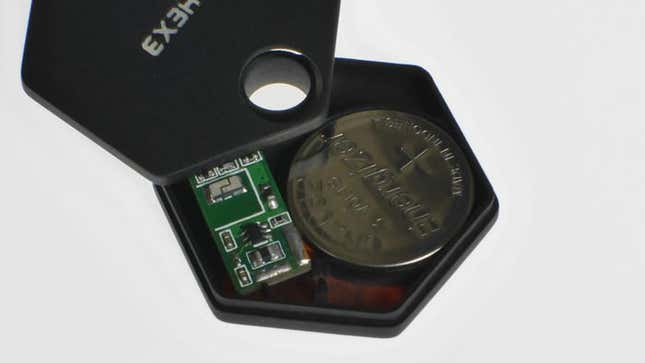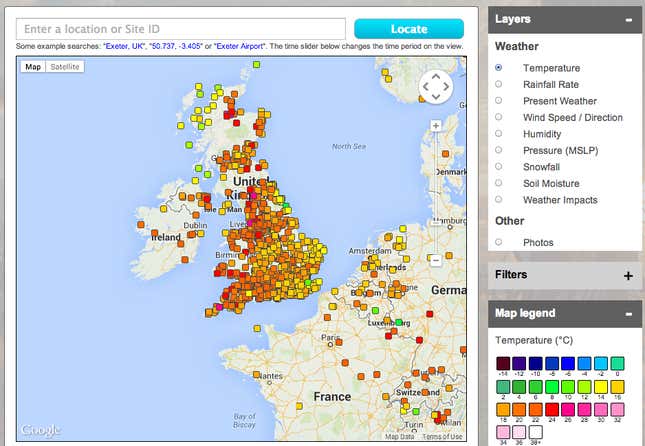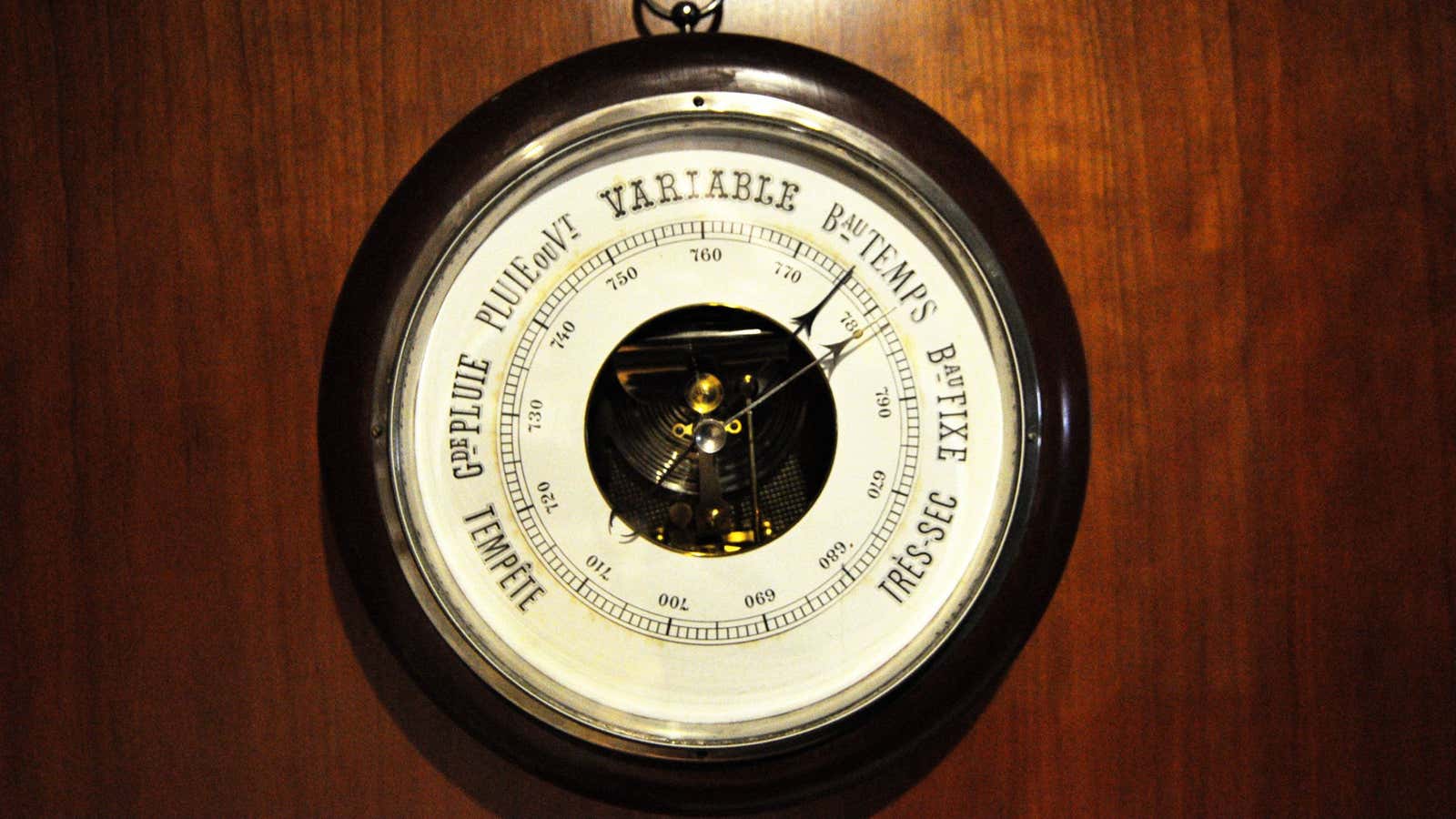“There’s a storm coming, Mr Wayne,” Selina Kyle said to the man who sometimes prances about in a bat costume. She meant it metaphorically, but if the lady who often dons a cat outfit had one of these in her utility belt, she’d have known a thing or two about the weather too. Launched last week on Kickstarter, StormTag promises “a bluetooth weather station on your keyring.” In the seven days since it went live, the project has raked in over $43,000, more than twice the amount requested.
The idea is simple. Cram in some sensors and a battery in a tiny device about the size of an SD card, connect it to your phone via Bluetooth, and presto: Personal weather forecasts. The most important sensor is the barometer, which measures pressure. A sudden drop in pressure indicates stormy weather ahead. Stable pressure means the weather will stay about the same. And so on. “it’s classic meteorology,” says James Robinson of OpenSignal, an app that tracks the strength of cellphone signals. Robinson’s firm is working with Jon Atherton, who created the hardware, on making the app that goes along with it.

The basic version of the StormTag has only pressure and temperature sensors. The advanced version, StormTag+, also comes with a humidity gauge, an ultraviolet light sensor, and memory to store weather on data on the device. These extras help the tag more accurately figure out the weather by determining whether it is indoors or outdoors and how much to compensate for weather perception (high humidity often makes warm weather feel much hotter).
There is more to these mini-weather stations that just personalized weather predictions. Robinson says the aggregated data from the hundreds (or perhaps even thousands, at the rate the Kickstarter campaign is going) of StormTags will be useful for more large-scale weather modeling, something he has been working on as a side project to OpenSignal. Robinson hopes that these tags may even be scattered about the world, allowing meteorologists to gather data from thousands of locations. “Perhaps a farmer will put one of these in his fields so he knows the temperature profile and humidity profile and can figure out the best use of his land,” he says.

Major weather forecasters are already experimenting with crowdsourced data. Britain’s Met Office has 460 certified weather stations in the UK but it has also allowed amateur weather enthusiasts to contribute data to its Weather Observations Website (WOW) for three years. It has received over 250 million weather observations from 5,500 locations, says John Harrison, head of products at the Met Office. Inspired, the Australian Bureau of Meteorology launched its own version, co-branded with the Met Office, which has met with great success. The Met Office doesn’t directly use the data it gathers from amateurs in its forecasting—its standards for data quality are very high—but it does use them to “sense-check” the forecast, says Harrison.
OpenSignal’s Robinson already collects data from Android phones equipped with the right sensors through the company’s WeatherSignal app. He expects that StormTag will allow him to tap into a vast base of iPhone users as well. “The ultimate goal is to have really fine-gridded weather predictions,” he says.
